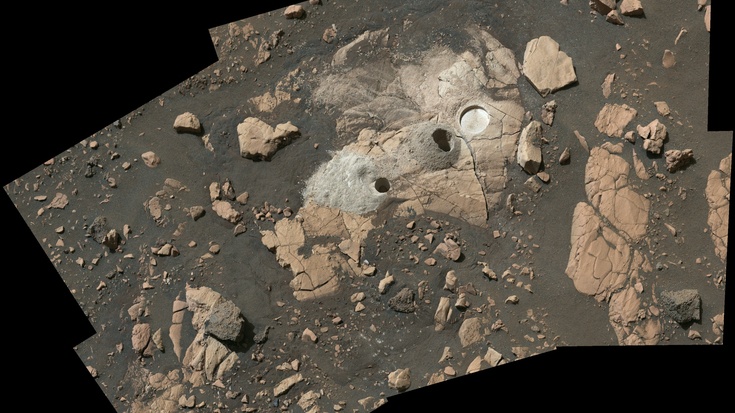Mars rock samples show signs of water in Jezero Crater — could life have once existed there?
One day, scientists hope to bring these rock samples back to Earth.

Another day, another step closer to finding out whether life once existed on Mars. A new study suggests Mars rocks collected by NASA's Perseverance rover show signs of water — and where there was once water, there may have once been life.
The rock samples were collected from Mars' Jezero Crater in 2022, specifically in a "fan-like region" filled with sedimentary rocks on its western slope. This region appears to have once been the point where a river deposited sediments into a now-dry lakebed.
"These rocks confirm the presence, at least temporarily, of habitable environments on Mars," says the study's lead author, Tanja Bosak, a professor of geobiology at the Massachusetts Institute of Technology's Department of Earth, Atmospheric and Planetary Sciences (EAPS). "What we've found is that indeed there was a lot of water activity. For how long, we don’t know, but certainly for long enough to create these big sedimentary deposits."
Related: New Mars terraforming idea: engineered, heat-absorbing dust nanoparticles
While Perseverance's instruments did not detect organic matter within the rocks, however, researchers did find some promising minerals in the samples. "We found lots of minerals like carbonates, which are what make reefs on Earth," said Bosak. "And it's really an ideal material that can preserve fossils of microbial life."
But they also found something more unexpected: sulfates, which form in salty water. Salt water isn't necessarily ideal for life, but it might provide evidence of life. "[I]f there were any organics present, it's like pickling something in salt," said Bosak. "If there was life that fell into the salty layer, it would be very well-preserved."
The rock samples have been sealed in tubes, and it's the teams' hope that those samples will one day be returned to Earth for more in-depth study. "On Earth, once we have microscopes with nanometer-scale resolution, and various types of instruments that we cannot staff on one rover, then we can actually attempt to look for life," said Bosak.
Breaking space news, the latest updates on rocket launches, skywatching events and more!
The study was published on Aug. 14 in the journal AGU Advances.

Space.com contributing writer Stefanie Waldek is a self-taught space nerd and aviation geek who is passionate about all things spaceflight and astronomy. With a background in travel and design journalism, as well as a Bachelor of Arts degree from New York University, she specializes in the budding space tourism industry and Earth-based astrotourism. In her free time, you can find her watching rocket launches or looking up at the stars, wondering what is out there. Learn more about her work at www.stefaniewaldek.com.
